The Buzz Over Non-Bee Pollinators
11:51 minutes
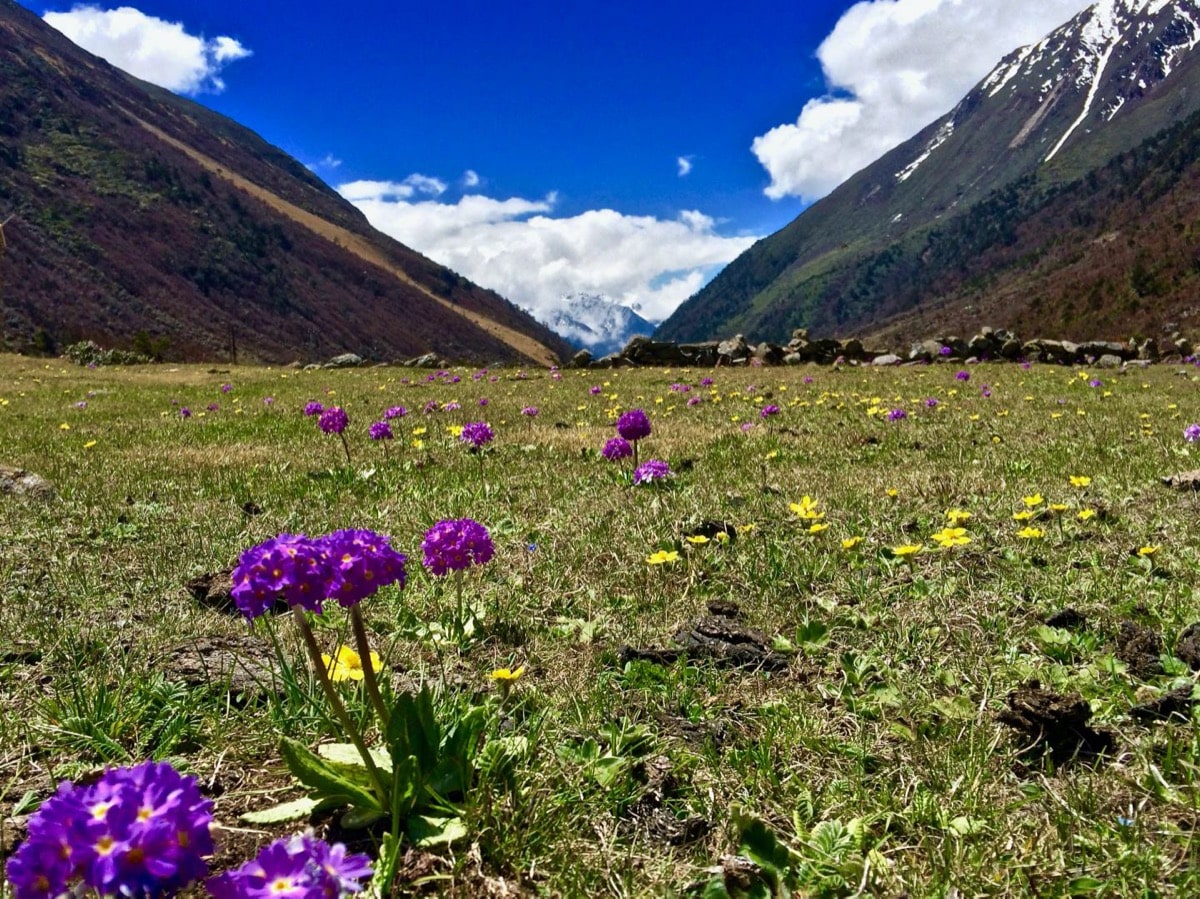
When you think of pollinators, bees are probably the first insect that comes to mind. But there are actually all sorts of insects and animals that contribute to pollination, like moths, beetles and many kinds of flies—from hoverflies to gnats.
Pollination biologist Robert Raguso joins SciFri to explain how different pollinators have different ‘personalities,’ with different strategies and roles—and how they are being affected by climate change.
Get up close and personal with some non-bee pollinators with the photos below:
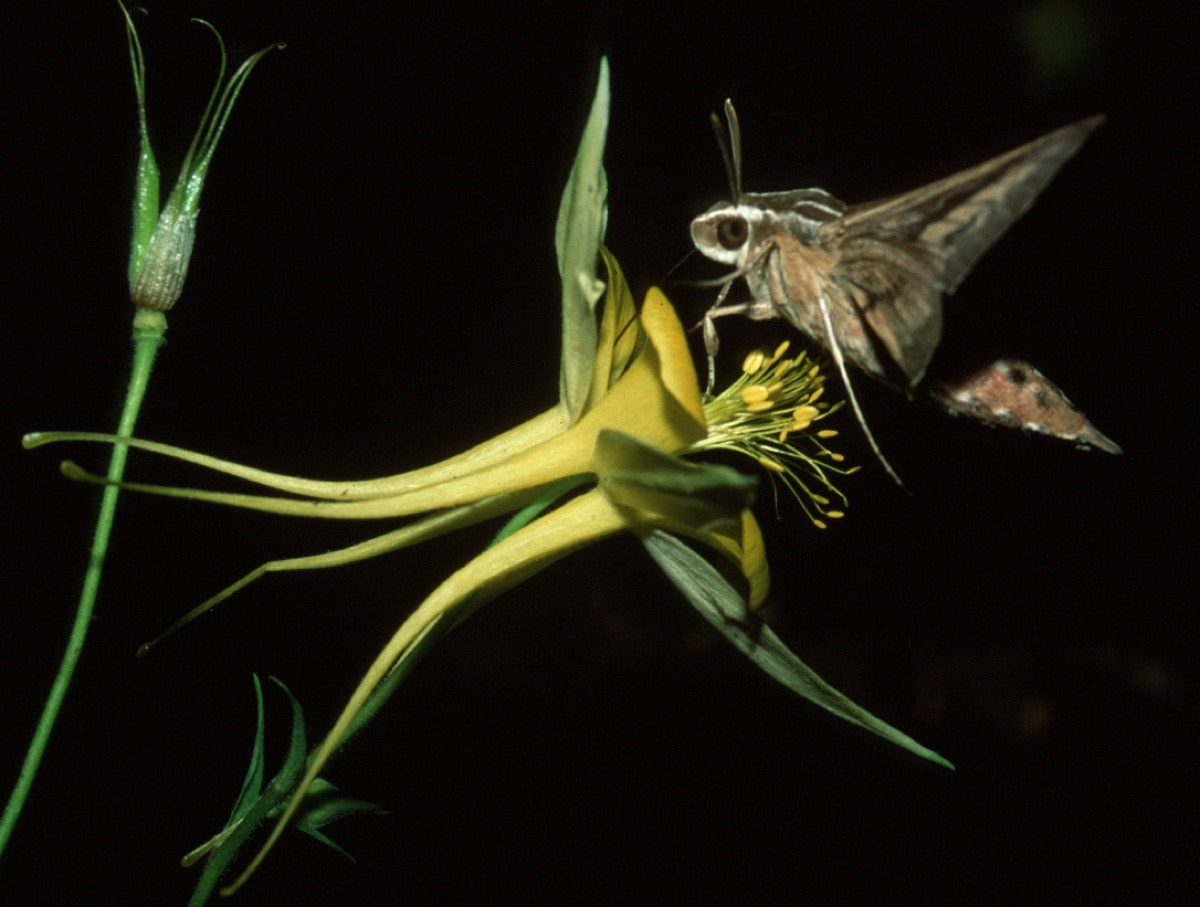
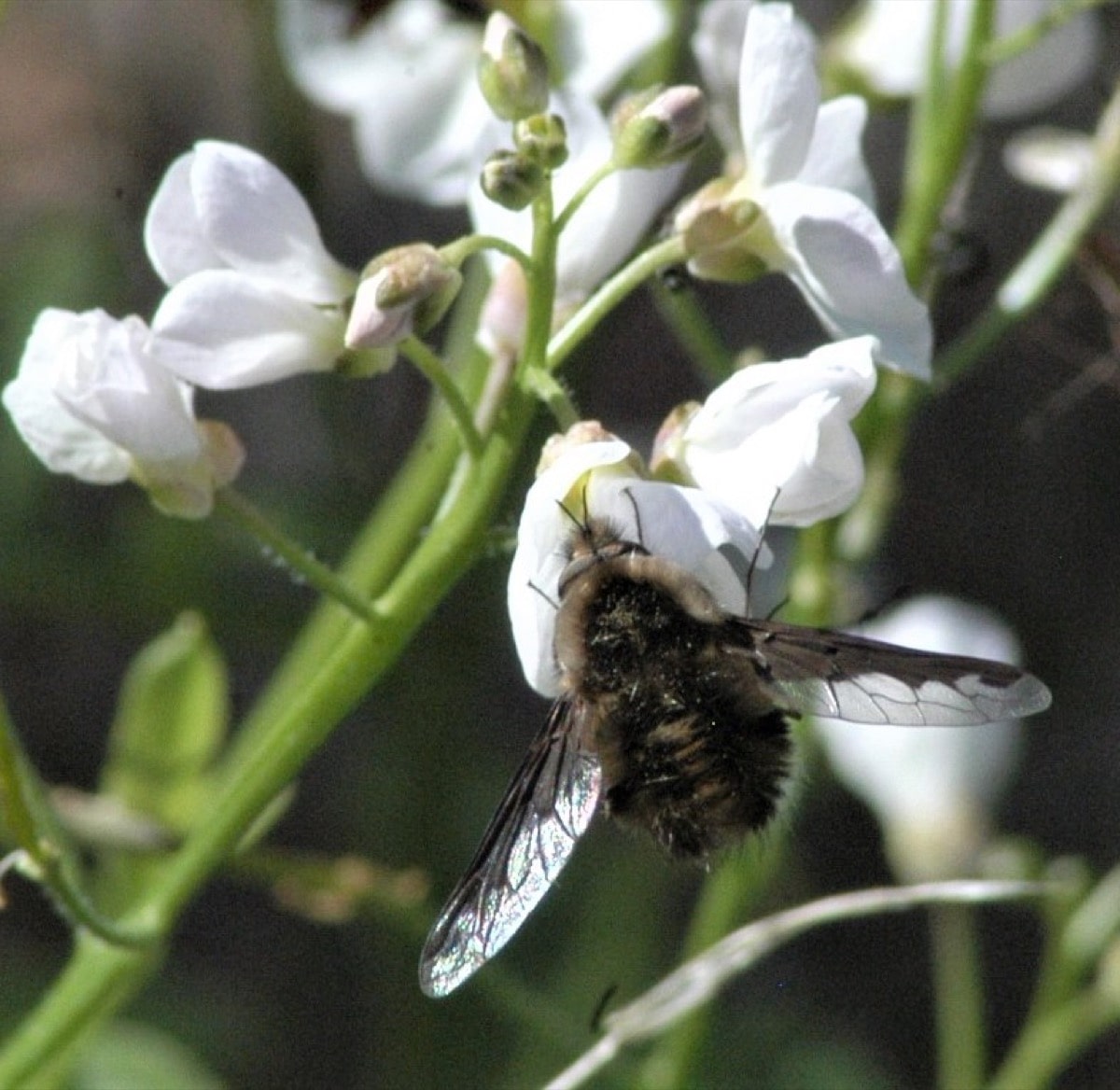
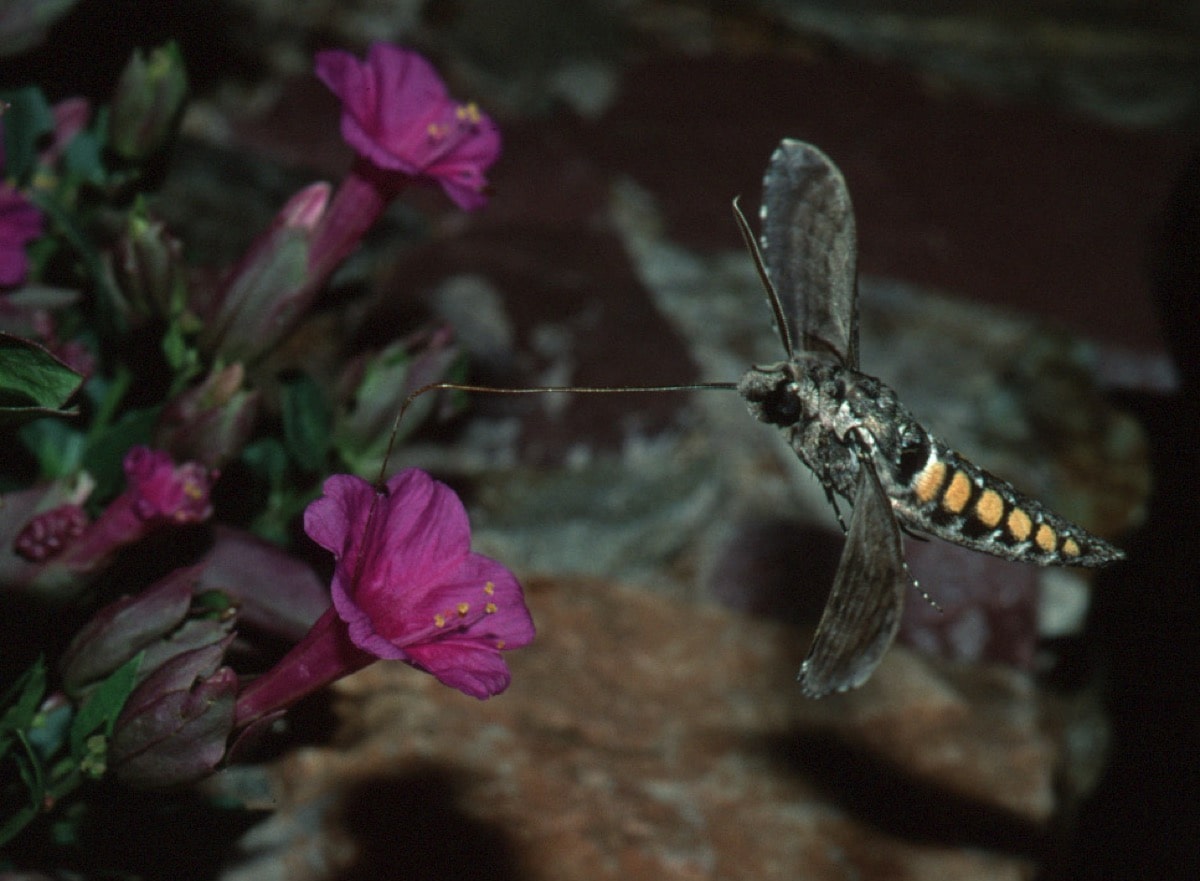
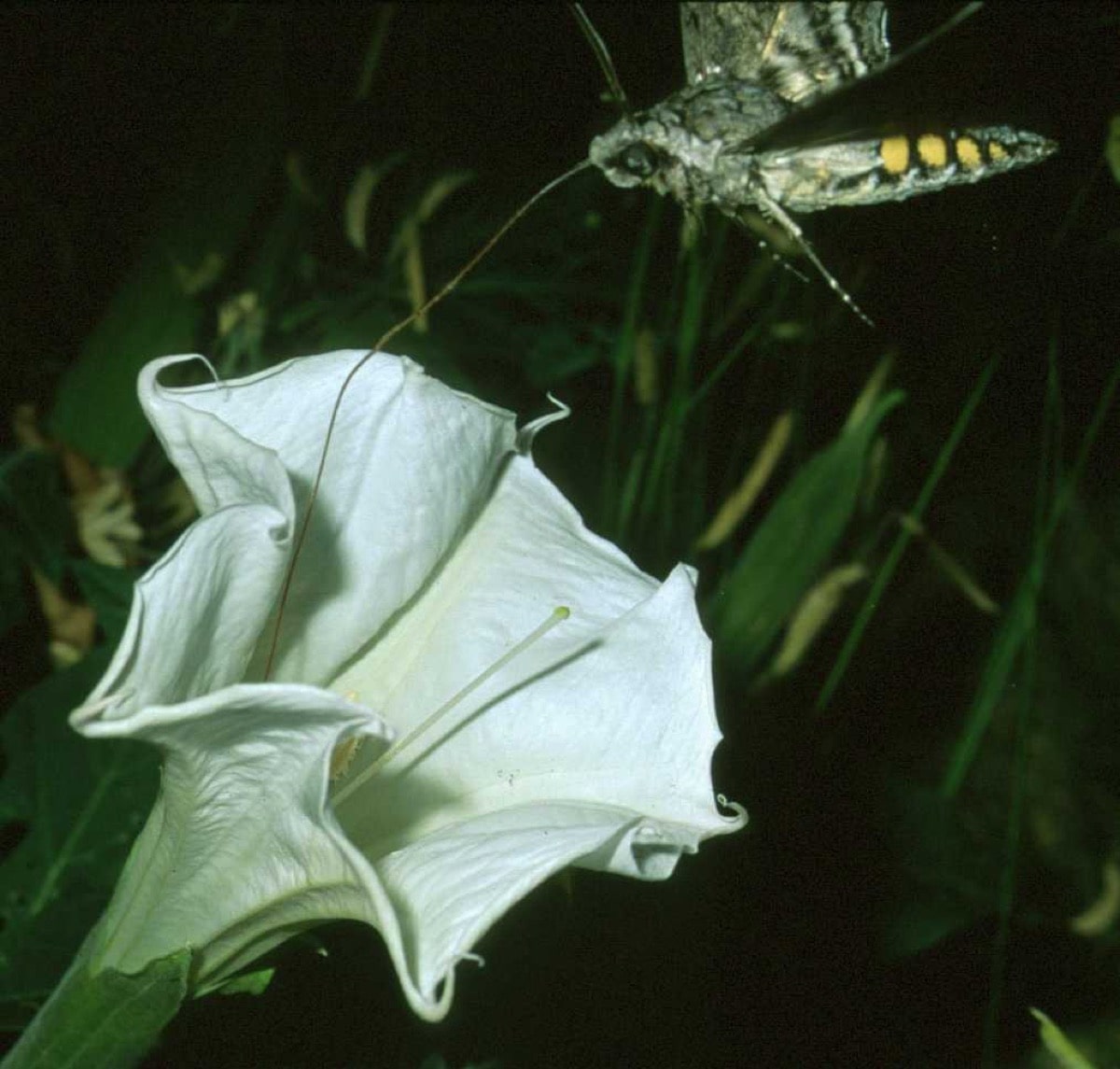
Invest in quality science journalism by making a donation to Science Friday.
Robert Raguso is Professor of Neurobiology and Behavior Cornell University Ithaca, New York.
IRA FLATOW: This is Science Friday. I’m Ira Flatow. The days are getting longer, temperatures are getting warmer, and that means spring is officially in bloom. To celebrate the season, we’ll be talking all about our favorite pollinators. Of course, you’re probably thinking bees, right? Well, we will be talking about beekeeping a bit later in the hour.
But right now, did you realize there are all sorts of insects and animals that make up the pollination nation? And we want to highlight some of these lesser talked about pollinators like moths, beetles, and all sorts of flies, from hover flies to gnats. My next guest is here to guide us through this world of pollinators. Dr. Robert Raguso is a pollinator biologist and professor of neurobiology and behavior at Cornell University in Ithaca, New York. Welcome to Science Friday.
ROBERT RAGUSO: Hello, Ira, really glad to be here.
IRA FLATOW: When we talk about pollination, there are pollinators that live in hives and those that are solitary. How does that affect their pollination lifestyles? How do they pollinate plants differently?
ROBERT RAGUSO: Wow, what an open question that is. The world of pollination is really diverse. If you think of flowers as investors, they have diversified portfolios. Some of their visitors are low risk bonds that are just going to pay off for them. Even in self-pollination is a way to get your seeds in the ground when nothing else comes.
But then some of the other pollinators, like the hawk moths that I study, are high risk, high gain stocks in the sense that if and when they come– and you can never quite bank on them– they might be the best thing to happen in a decade for that plant in terms of moving pollen from a distance and really effecting some important out crossing and mixing the gene pool for that plant.
And that’s especially important if the plant’s living in a fragmented landscape, where it doesn’t have that many neighbors. And maybe some of the pollinators that are more stay-at-homes, like social bees, might not move the pollen very far when they visit the plant. So when we study pollination as a spectrum of animals that have different reasons for visiting flowers, some of the consequences of those reasons are, what does it do for the reproductive outcomes of the plant?
IRA FLATOW: I never thought I’d get a Wall Street analogy when talking about pollinators. But you said that very well. We know that bees are an important pollinator. But are they the most efficient pollinator?
ROBERT RAGUSO: It depends on the bee, Ira. Almost all insects are very, very diverse. So we’re kind of careful not to generalize too much. The bees that most people think of are the social bees, whether they’re honeybees that are managed in agricultural systems or that have gone feral and are naturalized and wild. Or they could be bumblebees that are also social, but have smaller hives. But they have divisions of labor. They have a local hive that they return to. And they are somewhat tethered by that location. They can disperse up to a kilometer or so from their hive. But they tend to visit the same groups of flowers every day.
So if you think about pollen mixing in a crop or in a population of wildflowers, the kind of animal that visits you is going to have really– is going to move in different ways between the flowers. So social bees might be collecting pollen to bring back to the hive to feed their young, to feed their brood. Whereas hover flies eat pollen themselves. So in terms of efficiency or effectiveness, a lot of insects do very different things when they visit flowers. Hummingbirds and hawk moths that I study don’t have any interest in pollen.
So then what happens and what matters for the plant is, how fastidious are they? Do they groom themselves after visiting a flower, in which case the likelihood of moving pollen very far is low. Or are they slobs, like the moths that I study, in which case they have pollen dangling all over their extremities, and they fly 200 meters or 1,000 meters or across the road to the other population, and they dangle off 1,000 pollen grains on the next flower of anything primrose or a Datura night blooming plant. That’s magic for those plants, right?
IRA FLATOW: Moths as slobs, never heard that before.
ROBERT RAGUSO: They don’t come back home. You can’t count on them every night. But when they come, they are magic.
IRA FLATOW: You mentioned the hawk moth. Can you talk more about that?
ROBERT RAGUSO: They are the insect world’s version of a hummingbird. They could be two or three or even four grams in size. They can hover 40 to 60 wing beats per second. They’re amazing, incredible animals. Their tongues can be three times the length of their bodies. And they can disperse across bodies of water, across deserts. But I was interested in where flowers get sent and how do they produce strong perfumes and what are the functions of those perfumes.
So I tended to study night blooming plants like jasmines and gardenias and evening primroses that have very strong fragrances. And invariably, around the world, the pollinators of those wonderful plants are hot moths. They’re sphinx moths. You put on your headlamp, and you go out and watch them at dusk. Most people think they’re seeing hummingbirds when they see them. They hover in front of flowers instead of landing on them. They keep their tongues out while they’re drinking so it looks like a dipstick. They’ve got a little lot of pollen halfway up the tongue, and they’re just dipping in it to moon flowers left and right.
And you can see with your own eyes, like, wow, that guy just hit half of the open flowers in front of me. And then it flew across that sand dune to the next patch of flowers. So sometimes what we do is put fluorescent powder out, and then we let the moth move it. And then we take out a UV lamp and look how far that pollen went, just by one or two moths that came through in the last 15 minutes.
IRA FLATOW: I recently learned of beetles as pollinators. I hadn’t thought of beetles as pollinators.
ROBERT RAGUSO: Beetles have so many niches that you would be unwise to try to generalize for them. But like flies, there are beetles that are parasitic or that eat carrion and carcasses. There are other beetles that use flowers as places to mate, as trysting sites. We were joking the other day in class that there’s a whole category, there’s a whole niche of flower that we call love hotels, believe it or not, like Queen Victoria’s water lily or some of the philodendrons that bloom at night, where they’re big white chambers. They’re very perfumed. And they get hot.
And what they do is they attract the scarab beetles in droves. And they give them protection. They keep them warm. And they feed them pollen and secretions and things. And they’re beetles. They make a mess. They nibble on the petals of the flowers. But mostly what they do is they mate. It’s like spring break every night in these flowers. And the beetles– and it’s a moveable feast the next night. The next morning, they leave the flower. The heat turns off. The perfume goes away. They sleep it off, and then they go find another party the following night in a rain forest that might be a kilometer away.
But they’re attracted to fragrance, and they find the next flower. And they’ve got pollen all over their bodies. So one of the big categories ends up being, do you groom? Are you fastidious? If you visit a flower– if you ever watch a hummingbird, for example, it’ll visit 20 flowers in a row. And then it might land on a twig and clean off its bill. So, right? So that’s it. There’s no more pollen moving on its bill. It might still have some on its chin.
Some flies are extremely fastidious. And so you have to sort of be cautious about how good fly pollinators are. You’ve got to watch them because there’s things that you can’t see or appreciate at night, at dusk, or at the scale, time scale and spatial scale of a fly or a beetle.
IRA FLATOW: Wow. I never realized how important flies were. You talked a little briefly about hover fly as an important pollinator.
ROBERT RAGUSO: Hover flies and bee flies are most similar to bees in the way they visit flowers, if not, their life cycles. So there are many cases where they’re kind of co-pollinators with bees and some butterflies. There’s some special cases, like in South Africa, where I’ve worked, where there are horseflies and tango wing flies that have extremely long tongues, maybe three times the length of their bodies.
And they have a special gild. South Africa didn’t get glaciated like the north did. And so the habitats are older there. There’s been a lot more evolution of specialized pollination in South Africa. And so I got to witness with my host Steve Johnson, I got to see whole gilds of geraniums and orchids and things that are very tubular flowers, really brightly colored with arrows leading toward the nectar hole, and these long, long tongued flies pollinating them. So those are the guys who behave like bees.
Then there’s fungus nets and niches and carrion flies who visit flowers by mistake. They visit flowers that I like to say are playing dead, pretending to be rotting meat or feces or rotting fruits. And those are flies that live their– or mushrooms. Those are flies that live their lives laying eggs in those rotting substrates and completing their life cycles. So, forensic flies, florid flies that the CSI would use to know how long a body’s been dead, these are flies that end up pollinating some plants when the plants pretend to be stinking corpses.
IRA FLATOW: Hm, this is interesting. There’s so much we can talk about. But I want to end on talking about honeybees, wild bees, managed honey bees are in decline, and the difference between them. And what are the separate problems having to do with them?
ROBERT RAGUSO: Sure. And that’s the many billion dollar question across the world, isn’t it? My understanding of the problem with managed bees is two or three-fold. One is genetics. It’s about, do they get inbred? Do the market forces that drive the way that they’re managed sort of get them in trouble in terms of their ability to fight off pathogens and those mites that attack them? The second problem is stress. Various ways that managed bees are managed can affect their biology, including the transfer of pathogens and diseases.
Number three is a rapidly changing planet. There are challenges that managed bees face that weren’t challenges 20 years ago or 40 years ago when some of the policies guiding their management were made. I want to stress the issue of diversity. We began our conversation talking about diversified portfolios and how plants, if they have generalized pollination strategies, we hope that their ecological stability is bound up in having more than one pollinator.
What we’re learning, though, colleagues like Rob Gegear at UMass studying the fact that not all bumblebees are the same, right? Bumblebees are diverse in their niches, too. So I keep stressing that point that beetles and flies and moths and bees are very, very diverse animals. And they have different styles and behaviors and personalities and needs. Some very generalized, trashy, weedy bees are doing really well with humans. There are other bees that are disappearing faster than we can figure out why.
And one of the caveats that we all have is being careful about saying, well, we have another bumblebee species that visits that plant. Well, hopefully, there’ll be some redundancy in terms of their services to the plant. And we don’t know yet. Those are some of the projects that are being funded out there right now, not just by NSF, but by the US Department of Agriculture, too. And they’re really important.
IRA FLATOW: Well, Dr. Raguso, we have run out of time. Boy, what an interesting discussion. I want to thank you for taking the time to be with us today.
ROBERT RAGUSO: Ira, it has been my pleasure. Thanks so much for talking with me about something that we really love.
IRA FLATOW: Robert Raguso is a pollination biologist and professor of neurobiology and behavior, Cornell University in Ithaca, New York.
Copyright © 2021 Science Friday Initiative. All rights reserved. Science Friday transcripts are produced on a tight deadline by 3Play Media. Fidelity to the original aired/published audio or video file might vary, and text might be updated or amended in the future. For the authoritative record of Science Friday’s programming, please visit the original aired/published recording. For terms of use and more information, visit our policies pages at http://www.sciencefriday.com/about/policies/
Alexa Lim was a senior producer for Science Friday. Her favorite stories involve space, sound, and strange animal discoveries.
Ira Flatow is the founder and host of Science Friday. His green thumb has revived many an office plant at death’s door.